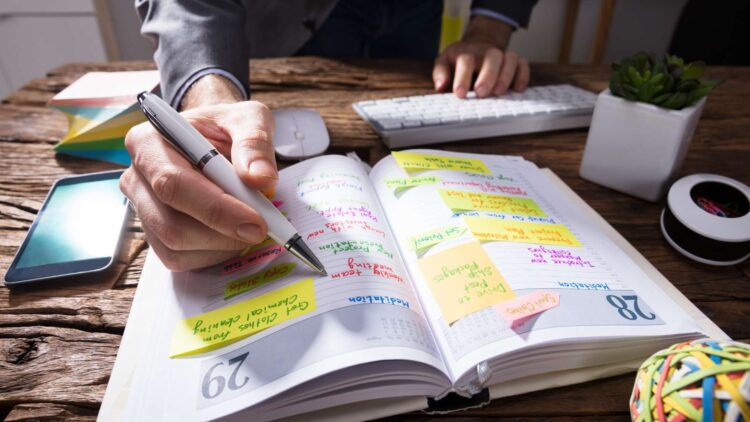
You must have found yourself slacking, overburdened with leftover homework, and often wondered how you ended up in that sticky situation, even after doing everything right. Every student faces this, being forced into long periods of stress and anxiety because of poor time management. When it comes to the academic success of students, they can be the most hard-working students out there but without proper time management, none of their hard work will bear any fruit. Time management is a skill that’s important for not only students at all grade levels but also for working-class adults. Planning a study timetable is the best way for you to utilize and gain proper control over your study time. If you feel organized and feel like your efforts are being properly rewarded you are more likely to work to your full potential.
Here are some tips to help you prepare a timetable that’s right for you.

Step 1: Finding out your learning style
The most important step in formulating a timetable is to realize that every student is different and each one of them is trying to utilize their time in the best way possible. The right timetable isn’t the one that has the highest amount of study hours, the right timetable is the one that caters to all of your needs. For some students, mornings are most productive, others evening. Some of them cannot keep an eye open after eating lunch while others find themselves full of energy. Keeping all this in mind, we need to design our timetable.
Finding out your learning style also includes knowing what kind of a learner you are. These mainly fall into four major categories: visual learner, auditory learner, read and write and kinesthetic learner. Visual learners are the ones to learn the most by images, flashcards, infographics, maps, etc. Auditory learners best grasp the syllabus by speaking and hearing in situations such as lectures and group discussions. Read and write learners have a strong reading/writing preference, learn best through words. These learners are copious note-takers and avid readers. Kinesthetic learners are hands-on learners and learn best by figuring things out by hand. You need not know which category you exactly belong to formulate the right timetable for yourself, but you should be at least aware of which one works the best for you.

Step 2: Gathering all tasks at hand
Your timetable should include all of your responsibilities along with your studies. Planning the right timetable means factoring in all of your tasks. Time should be allotted for the completion of each task. Tasks such as walking your dog, playtime, daily chores, social interactions all should be included and given appropriate time to in the timetable. Also, mark important dates such as birthdays and festivals so that you are aware of the days where you wouldn’t be able to work for as long. Make a list of all your daily tasks first and then fit them into the timetable.

Step 3: Balancing your time
Once you are aware of your tasks at hand, you can now start factoring in time. Equal time should be allocated to studies and other recreational activities such as sports, social interactions, etc. To make the most of your timetable, you should reward yourself for the effort you put in so that you stay motivated to put in even more effort during the latter part of the day.
You can time your tasks, like for example, study physics for 25 minutes and then give yourself a break for 5 minutes for scrolling through social media. This is a very famous time management method known as the Pomodoro technique. With this technique, you learn to break up complex tasks such as CBSE class 9 science chapter “Motion”, into easily digestible bits like momentum. Take help of Vedantu ncert book solution to understand the concept clearly. As you work you can increase your work time, with your break time increased as well and you will start to notice that you are able to focus for long hours in no time without giving into little distractions. You can make use of focus apps such as Forest, Nosili, Engross available on the playstore to help you time tasks right. If not focus apps the default timer is also enough. An appropriate amount should be given to sleep. A minimum of 8 hours of sleep is needed for proper growth and development. Proper sleep also helps you stay fresh and active during the day hours.

Step 4: Taking Breaks
Taking breaks at equal intervals is very important so as to maintain a stream of concentration and avoid mental fatigue. You should take up good hobbies such as dance, music, and art to spend time in a way that builds your own personality as well. Taking up skills such as art helps you become more creative and improve your presentation skill as well. Every skill taken up affects your brain helping it develop, which in the end helps you get better at studies. Do not forget social interactions. Everyone should be in contact with friends and discuss their interests, hobbies with them. You can plan a timetable with your friend and both of you can help each other follow it. To avoid stress and overworking, copious amounts of breaks should be taken.

Step 5: Following the timetable
You have now designed a timetable which is right for you. You are content and satisfied with the timetable and excited to follow it, but the very next second a task comes up that you didn’t account for, and obstructs your timetable. A lot of students face this issue which leads to them abandoning the timetable. So here is the even larger task at hand, following the timetable through. It is important to follow through with the timetable by regular repetition and reward. It takes somewhere around 21 days to form a habit, after which it becomes automatic. Good habits can only be formed by pure determination and trust in the process. You need to know and remind yourself why you have a timetable and what outcomes it brings whenever you feel like giving up on it.
With these tips at your disposal, you can formulate a timetable that’s right for you and follow it through and excel at whatever may come by. Good luck!











